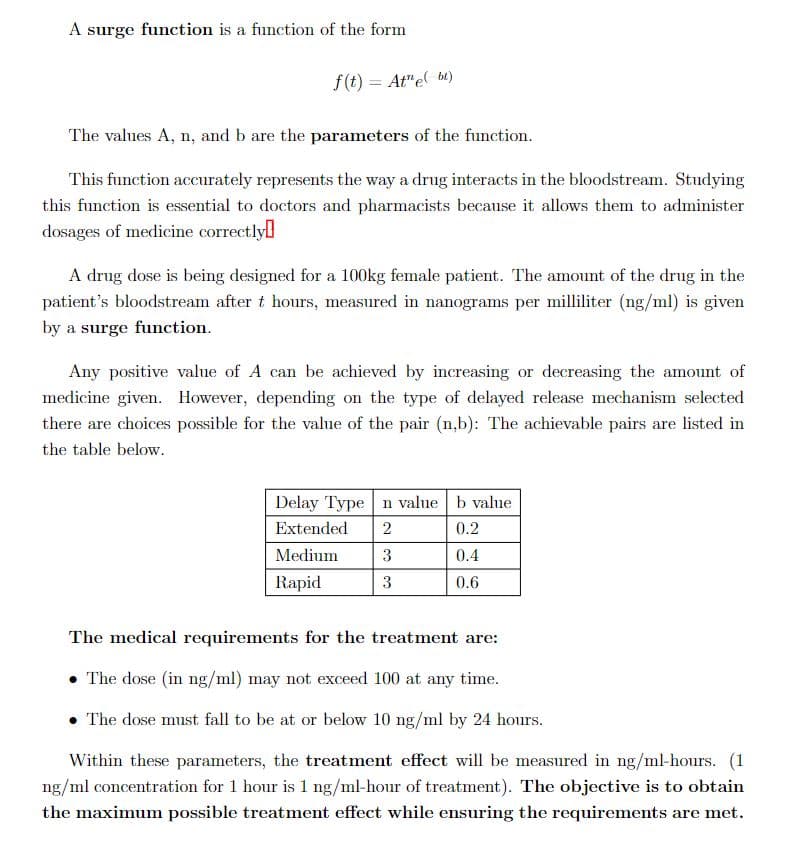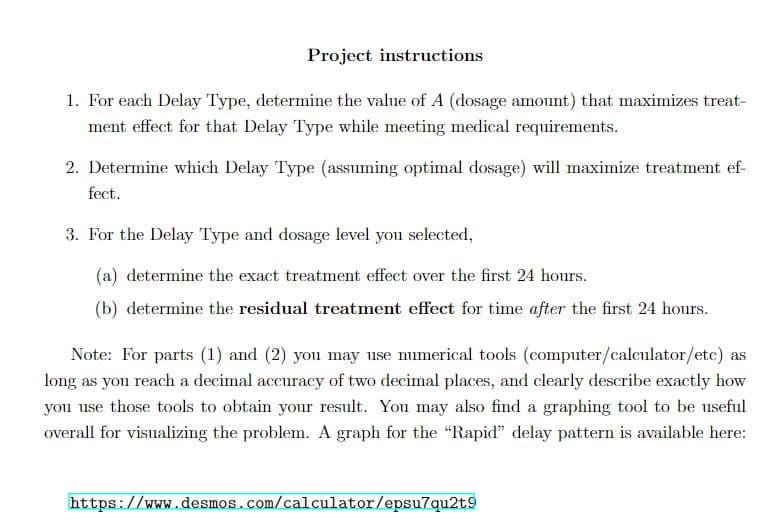A surge function is a function of the form f(t) = At" e( bt) The values A, n, and b are the parameters of the function. This function accurately represents the way a drug interacts in the bloodstream. Studying this function is essential to doctors and pharmacists because it allows them to administer dosages of medicine correctly A drug dose is being designed for a 100kg female patient. The amount of the drug in the patient's bloodstream after t hours, measured in nanograms per milliliter (ng/ml) is given by a surge function.
For number one, you need to find A. For extended delay type, input t as 24 then equal it to 0 (in this case, 10 is the limit for the extended type. Look at the graph) Then isolate A by dividing the function, so it should be 10/ (surge function). You can't do the same with medium and rapid since their limits are 100 and requires different time t value You need to take derivative to get t and then like before input the t value to the specific function and equal it to 100 to get A Number 2, I'm not too sure, but you need to compute integrals to get the area under the curve. The area is the maximum treatment effect. For Number 3a do another integral from O to 24 for the chosen delay type. For 3b compute an integral from. 24 to infinity. You're allowed to use a calculator for number 1 and 2 only via instructions provided I believe you must show your work for number 3 so I hope you are good doing improper integrals and


Trending now
This is a popular solution!
Step by step
Solved in 4 steps with 1 images








